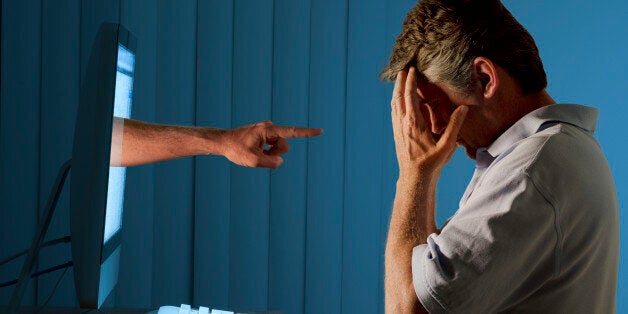
Presenter Jeremy Vine posted a video recording, on Tuesday, to his public Facebook profile. It showed an altercation that occurred between Jeremy, who was cycling at the time, and a female car driver.
Along with the annotated video he posted -
'This happened on Friday. I hate to overload our hard-working London police with footage from my commute, but I feel the person you see on the tape will at some point hurt someone very badly - either with her car or in a direct personal assault. See what you think.'
The shocking video footage predictably caused a bit of a social media frenzy, #JeremyVine#RoadRage was trending in no time. Not surprisingly given Jeremy Vine's considerable following; over ½ million on Twitter and 44,000 on Facebook.
Brilliant I hear you cry, that will teach the woman.
Not brilliant I'm afraid, because there's a few questions we need to ask and things we need to consider.
Why did he take to social media to share this footage? Why was it only afterwards that the police were made aware of it? Since when does the court of public opinion carry more weight than the police or our judiciary?
What possible outcome did Jeremy Vine expect through sharing this footage other than fuelling heated arguments and debates along with a tirade of abuse, some of it quite threatening in nature, to the female driver?
She asked for it I hear you cry.
Just stop right there.
Stop with the naming and shaming, stop with the witch hunts, stop with the vigilante approach to 'justice'.
When people take to social media to engage in what amounts to naming and shaming, they are seeking social endorsement for their right to take offense, be enraged, get angry and it works a treat.
Caroline Starmer's story, where she claimed her breastfeeding baby had been snatched away from her in a store by a security guard, made national headlines after she posted her claims in a Facebook group. The post was shared over 5000 times and became a big story around the world. Yes we were shocked and outraged, we were really angry on her behalf, the only problem was her story was exactly that, a story, complete fantasy. The security guard and store were later vindicated and Starmer was investigated and prosecuted for her claims.
Starmer's story is far from unique. In Australia a woman took to social media to share an image of a man she claimed had taken a picture near some children. Labelling him a 'creep' her post was shared over 20,000 times. When the man discovered his image was being circulated on social media, the next day, he immediately drove to a police station to identify himself. It turned out he had been taking a selfie to send to his own children but not before a social media jury had labelled him a dangerous predator and possibly a paedophile.
These stories are just the tip of the iceberg. Search 'name and shame' on Google and 20 million results are revealed. There are even entire Facebook pages and groups whose specific purpose is to 'shame' people. From cheating partners and bad drivers, to men who insult women and women who dress badly. You name it, someone is trying to shame it!
We must wake up to the danger in this. We risk endorsing a lawless society, where punishment is decided by a baying mob, when posts like Jeremy Vine's become common place. In no way does this excuse the action of the driver but we do not have all the facts on which to pass judgement, neither is it our role to do so. This crude form of power and exerting control should frighten all of us.
In the Salem Witch Trails of 1692 there were several reasons you might have been accused of being a witch including being female, middle aged, associated with another suspect, and considered contentious and stubborn. Sometimes people simply conspired against others out of pure spite or a vendetta. It became a brilliant way to eliminate someone you didn't like or an enemy. This is the danger in giving into mob rule.
Almost every day I see someone on social media trying to grab our attention, saying 'Look at this, isn't it disgusting?' Whether it's a girl claiming she's been body-shamed in a high street store, or a photograph of someone who won't move a bag on a crowded train, we are constantly being told to be offended, angry, or outraged.
We are all missing a big point here. Non-one ever put out a fire by adding petrol.
We don't need to take offence, get angrier or feel more outraged.
Instead we need to cultivate more kindness, compassion, and forgiveness and we need to ask what motivates people when they behave like the female driver Vine encountered.
The video shows an incredibly unpleasant exchange. Whatever happens next is not up to us, the social media jury, but down to a police investigation. Whatever the outcome the video is only one part of this woman's story; no-one knows what is going on in her life or why she is so angry.
If we try to understand the why then maybe we can fix our offended, outraged and angry society.
We need to understand the dangers with social media in the sharing of unreliable and uncorroborated information as was the case with Caroline Starmer and the Australian man labelled a 'creep'. Everything we see is filtered through the lens of someone else's viewpoint and agenda. Starmer's motivation, it later transpired in court, was financial gain. The Australian woman who labelled the man a 'creep', and others who suggested he was a dangerous predator, were simply wrong.
The police may be overstretched, our judicial system has its flaws, but the day we endorse vigilantism and witch hunts via social media will be a more frightening and dangerous one than this female driver ever was.
